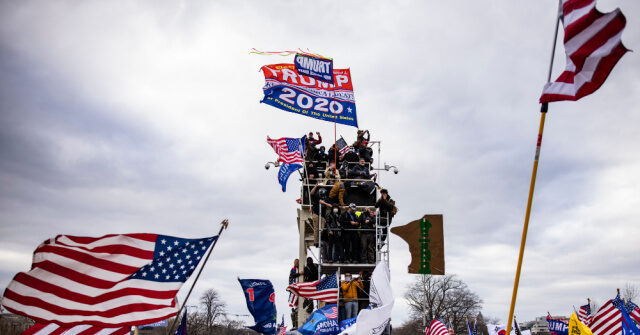On Thursday, Department of Justice Inspector General Michael Horowitz publicly disclosed findings regarding the presence of Confidential Human Sources (CHSs) during the January 6 protests at the Capitol. According to the report, while over two dozen CHSs were located outside the Capitol building during the unrest, the FBI had only specifically assigned three to monitor the event. Importantly, the report underscores that none of these sources were authorized by the FBI to engage in any unlawful activities or to incite others to break the law, reaffirming the bureau’s stance that it did not direct any CHSs to act inappropriately during this significant and controversial day.
The findings indicate that the FBI’s involvement on January 6 was limited due to the event not being classified by the Department of Homeland Security (DHS) as a major security threat. Horowitz elaborated on the role of the three CHSs assigned by different FBI field offices. One CHS was tasked to report on an individual involved with domestic terrorism who was already identified, while another monitored two additional subjects considered a potential threat. The third CHS intended to attend the event on its own initiative but had been assigned a similar monitoring role related to those two subjects. This suggests that the bureau was primarily collecting intelligence rather than engaging directly in the protest or crowd dynamics on that day.
Horowitz’s investigation determined there were no undercover agents infiltrating protest crowds or at the Capitol during the events. This lack of direct involvement from the FBI was supported by the bureau’s response to the report, which indicated that while it recognized the potential for violence, it did not hold primary responsibility for intelligence collection or maintaining event security on January 6. The FBI acknowledged its supporting role and affirmed that its CHSs were not authorized to participate in any illegal activity, demonstrating an effort to clarify its position amidst the scrutiny of law enforcement’s actions during the protests.
In light of this report, the FBI committed to implementing the inspector general’s recommendations to better assess its processes for handling events deemed as potential domestic security risks. This includes establishing clearer roles between field offices and FBI Headquarters regarding preparation for events that may present significant security challenges. The bureau’s acceptance of these recommendations reflects an acknowledgment of the need for improved coordination and transparency in its intelligence collection activities.
The report’s repercussions were felt within the political landscape, with House Judiciary Committee Chairman Jim Jordan commenting on the revelations. He indicated a belief that the FBI had actively encouraged and deployed sources to the Capitol on January 6, pointing out the disparity in how individuals participating in the protests were treated compared to the CHSs present, some of whom entered the Capitol while facing no charges. His statements bring forward broader concerns regarding the potential politicization of law enforcement agencies and their interaction with American citizens during protests.
In a related note, Representative Thomas Massie remarked on the timing of FBI Director Christopher Wray’s resignation, suggesting it coincided with the release of the Inspector General’s findings concerning the FBI’s activities on January 6. Massie’s comments highlight ongoing frustrations with the FBI’s transparency and accountability, and they encapsulate a larger sentiment among some lawmakers seeking answers about the agency’s role and potential overreach during historic events like January 6. The culmination of these findings prompts critical discussions about law enforcement practices, citizen rights, and the overall integrity of governmental institutions in protecting democracy.

